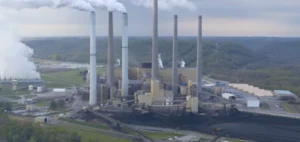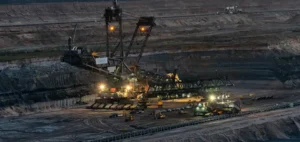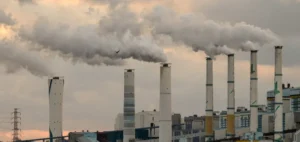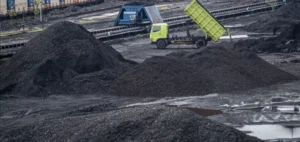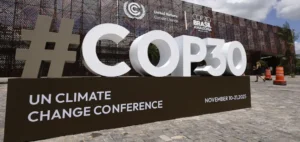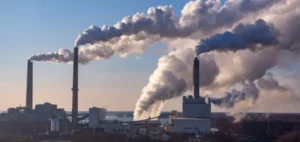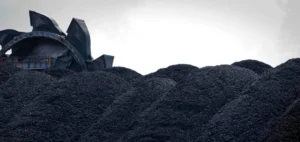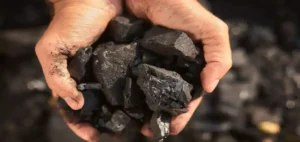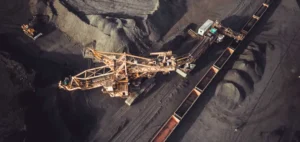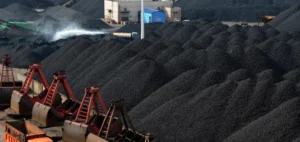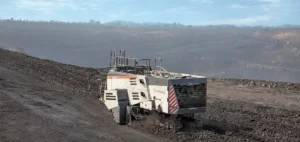Fires have been raging for a century in the coal mines of the Indian state of Jharkhand, where young Savitri Mahto, like 100,000 other people, risks her life collecting coal.
The devastating consequences of underground fires in coal mines
“The fires have charred the earth,” the 22-year-old woman, who illegally collects coal amid the flames on the outskirts of a vast commercial open-pit mine, tells AFP. “We live in fear every day,” she adds.
Underground fires, which scientists believe were caused by a mining accident in 1916, create chasms in the ground that collapse and engulf everything, people and homes alike. “It’s dangerous to live here,” confides Savitri Mahto, who dreams of becoming a nurse, “the houses could collapse at any moment”.
Fossil fuel collectors and activists report that hundreds of people have died over the decades. “Many accidents have already happened and continue to happen as the ground collapses,” she tells AFP, busily working around a heap of coal that produces coke, a compact fuel used for cooking and to fuel brick ovens.
The environmental and social impacts of coal mining in India
Vegetable seller Arjun Kumar, 32, who lost his house in a collapse, fears that his “life will become a living hell” if he is not rehoused, and will be “forced to live on the streets like a beggar”.
Coal consumption in India, the world’s most populous country and fifth largest economy, has doubled over the past decade, powering almost 70% of the country’s electricity grid. Half of India’s greenhouse gas emissions come from coal combustion. Only China consumes more.
According to experts, the pockets of fire that occur in the open-cast mines, spread over almost 300 km2, burn millions of tonnes of coal, producing huge quantities of CO2. Thick gray smoke floats over the fires, enveloping the dark, chaotic terrain and creating scenes with an apocalyptic atmosphere.
The responsibility of coal mine operators and the challenges of growing demand in India
“We have a responsibility to society when it comes to the environment,” admits Samiran Dutta, director of the mines’ commercial operator, Bharat Coking Coal Ltd (BCCL), a subsidiary of state-owned Coal India. According to Mr. Dutta, BCCL cannot be held responsible for the safety of people who enter the mines illegally. On the other hand, he points out that the company “purchased various gadgets”, such as misters, in the hope of reducing air pollution. But efforts to extinguish the fires, including the use of liquid nitrogen and the digging of firebreaks, have been in vain.
Savitri Mahto adjusts the scarf to cover her soot-black face. “The air is very polluted,” she says, referring to the toxic gases that burn her eyes and lungs. The miners work in appalling conditions, but “coal is vital to Jharkhand”, argues A. K. Jha, a local trade union leader, estimating that the mines could produce coal for the steel industry for another 200 years. According to him, “coal will never end”.
Demand for electricity continues to grow in India, the world’s third largest emitter of greenhouse gases, behind China and the United States, with a rapidly expanding middle class that needs to equip itself with air conditioners and refrigerators in particular. To date, warming of just one degree Celsius has made extreme weather conditions more destructive and deadly.
The socio-economic challenges faced by coal miners in reducing carbon emissions in India
India, with a population of 1.4 billion, points out that its per capita emissions are lower than the world average, but it has nevertheless committed to reducing its carbon emissions to zero by 2070. State authorities began evacuating mine dwellers in 2008, but many feel deprived of their livelihoods. Sushila Devi, whose 15-year-old daughter lost her life in a cave-in four years ago while collecting coal, says she has no choice but to stay. “I’m always afraid of suffering the same fate, but I’m destitute,” admits this woman who earns just six dollars a day, “if I don’t work, what will I eat?”
According to Mr. Jha, in the absence of other options, illegal coal mining will continue. “The key issue is livelihood,” says Mr. Jha, “if the government isn’t able (to provide jobs), people will have to make do with what nature gives them.”



